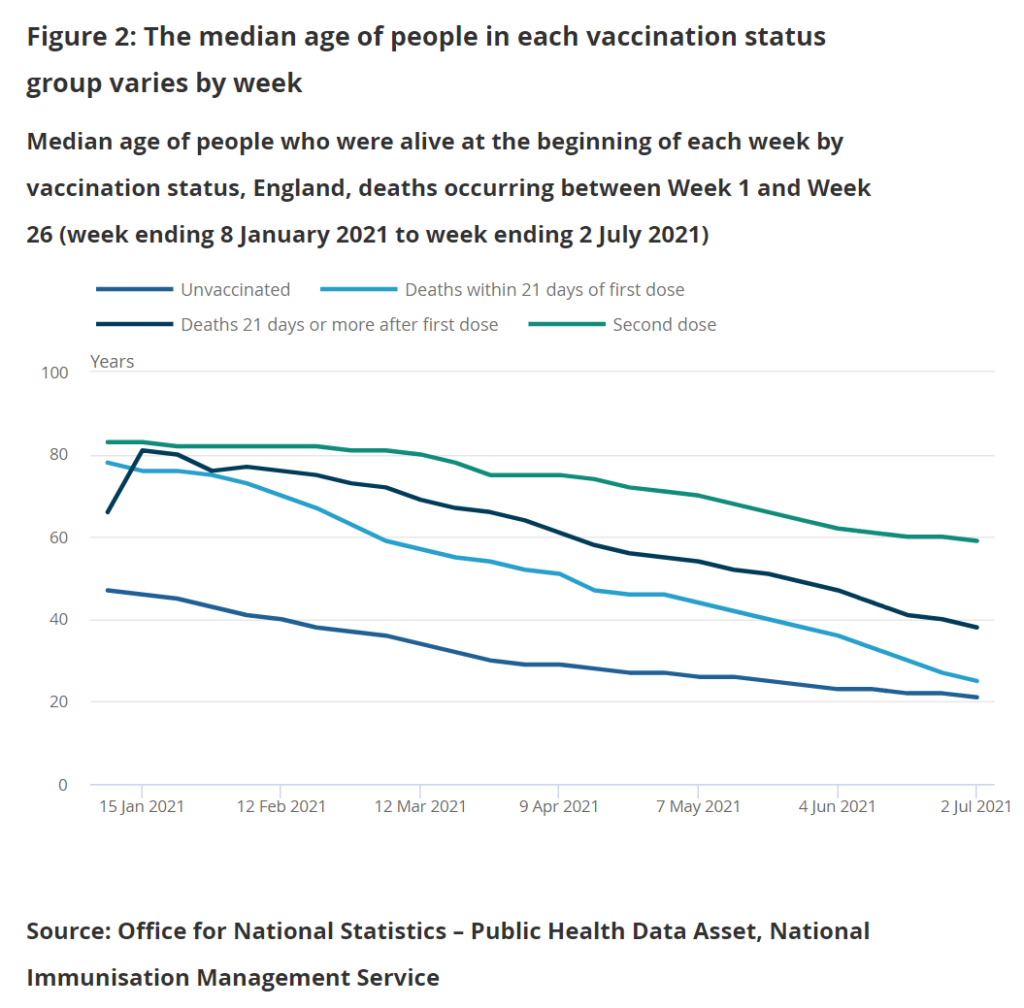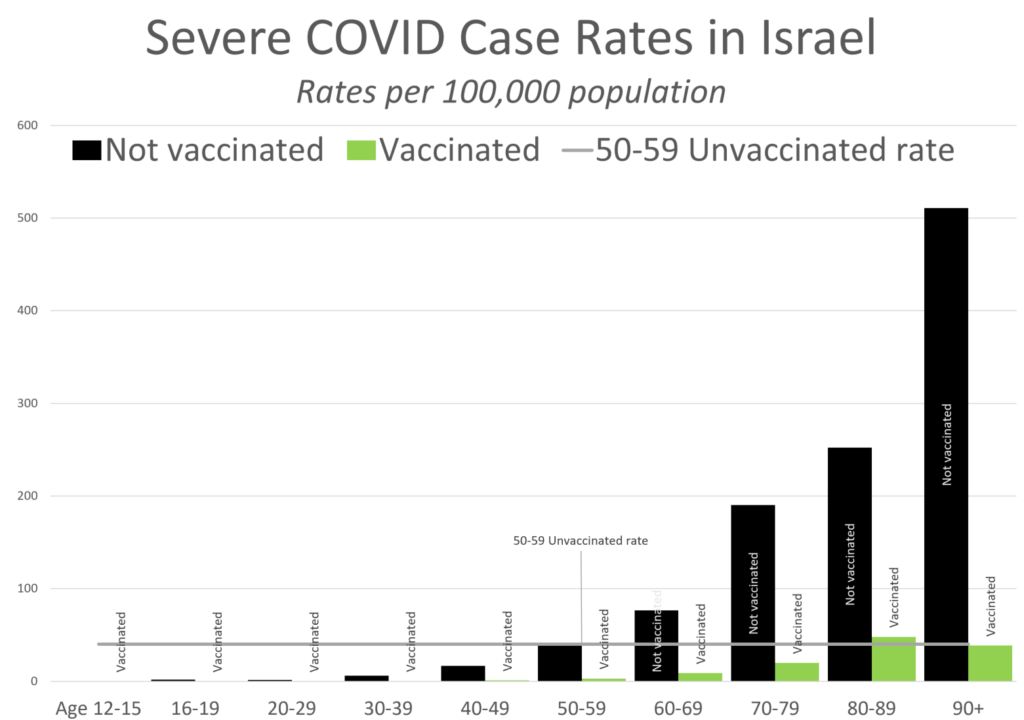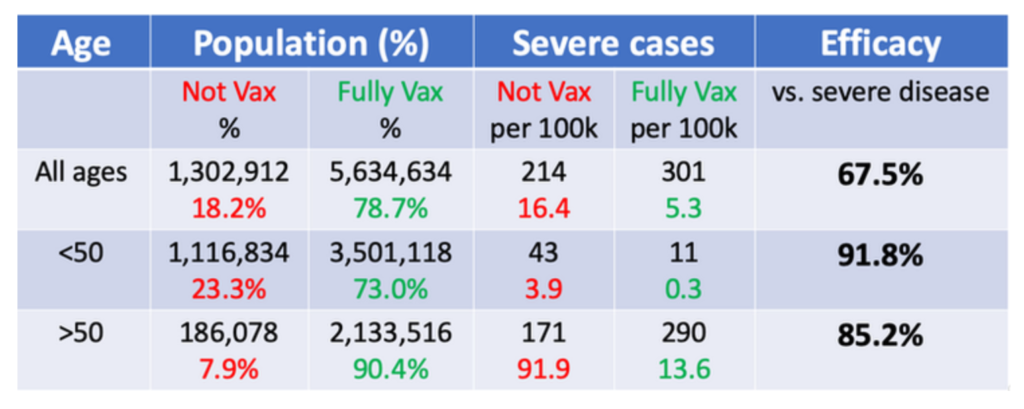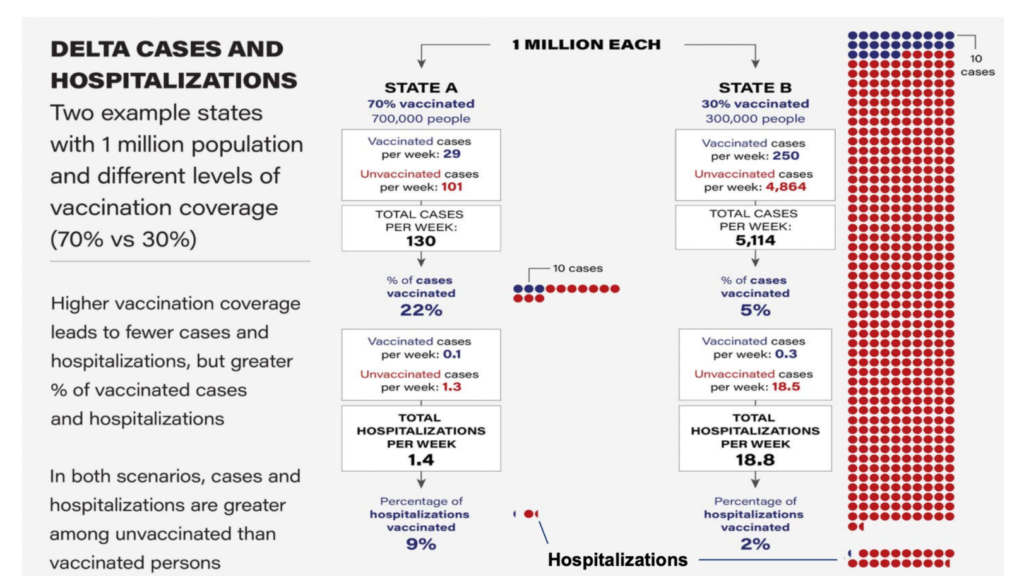Graphic:

Excerpt:
Age-standardised mortality rates are calculated for vaccination status groups using the Public Health Data Asset (PHDA) dataset. The PHDA is a linked dataset combining the 2011 Census, the General Practice Extraction Service (GPES) data for pandemic planning and research, and the Hospital Episode Statistics (HES). We linked vaccination data from the National Immunisation Management Service (NIMS) to the PHDA based on NHS number, and linked data on positive coronavirus (COVID-19) Polymerase Chain Reaction (PCR) tests from Test and Trace to the PHDA, also based on NHS number.
The PHDA dataset contains a subset of the population and allows for analyses to be carried out that require a known living population with known characteristics. These characteristics include age-standardised mortality rates (ASMRs) by vaccination status and the use of variables such as health conditions and census characteristics.
Author(s): UK government, ONS
Publication Date: Accessed 27 Sept 2021
Publication Site: Office of National Statistics






